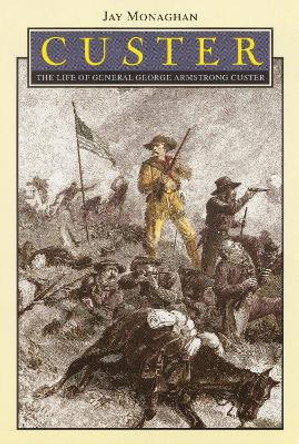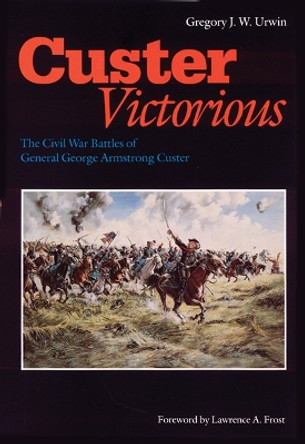George Armstrong Custer is famous for his fatal defeat at the Little Bighorn in 1876, but Custer's baptism of fire came during the Civil War. After graduating last in the West Point class of 1861, Custer served from the First Battle of Bull Run (only a month after graduation) through Appomattox, where he witnessed the surrender. But Custer's true rise to prominence began at Gettysburg in 1863. On the eve of the Battle of Gettysburg, only twenty-three years old and barely two years removed from being the goat of his West Point class, Custer received promotion to brigadier general and command - his first direct field command - of the Michigan Cavalry Brigade, the "Wolverines." Now that he held general rank, Custer felt comfortable wearing the distinctive, some said gaudy, uniform that helped skyrocket him into fame and legend. However flashy he may have been in style, Custer did not disappoint his superiors, who promoted him in a search for more aggressive cavalry officers. At approximately noon on July 3, 1863, Custer and his men heard enemy cannon fire: Stuart's signal to Lee that he was ready for action. Thus began the melee that was East Cavalry Field at Gettysburg. Much back and forth preceded Custer's career-defining action. An hour or two into the battle, after many of his cavalrymen had been reduced to hand-to-hand infantry-style fighting, Custer ordered a charge of one of his regiments and led it into action himself, screaming one of the battle's most famous lines: "Come on, you Wolverines!" Around three o'clock, Stuart mounted a final charge, which mowed down Union cavalry - until it ran into Custer's Wolverines, who stood firm, with Custer wielding a sword at their head, and broke the Confederates' last attack. In a book combining two popular subjects, Tucker recounts the story of Custer at Gettysburg with verve, shows how the Custer legend was born on the fields of the war's most famous battle, and offers eye-opening new perspectives on Gettysburg's overlooked cavalry battle.
About the AuthorPhillip Thomas Tucker is a writer and historian who has written or edited more than 130 works-both books and scholarly articles-of history, earning him the nickname "the Stephen King of history." His books include Pickett's Charge: A New Look at Gettysburg's Final Attack, which historian William C. Davis praised as "thoughtful and challenging . . . fresh and bold"; Death at the Little Bighorn: A New Look at Custer, His Tactics, and the Tragic Decision Made at the Last Stand; Cathy Williams; and Custer at Gettysburg. He retired from the Department of Defense to live and write full-time in Central Florida.
Book InformationISBN 9780811738538
Author Phillip TuckerFormat Hardback
Page Count 432
Imprint Stackpole BooksPublisher Stackpole Books








